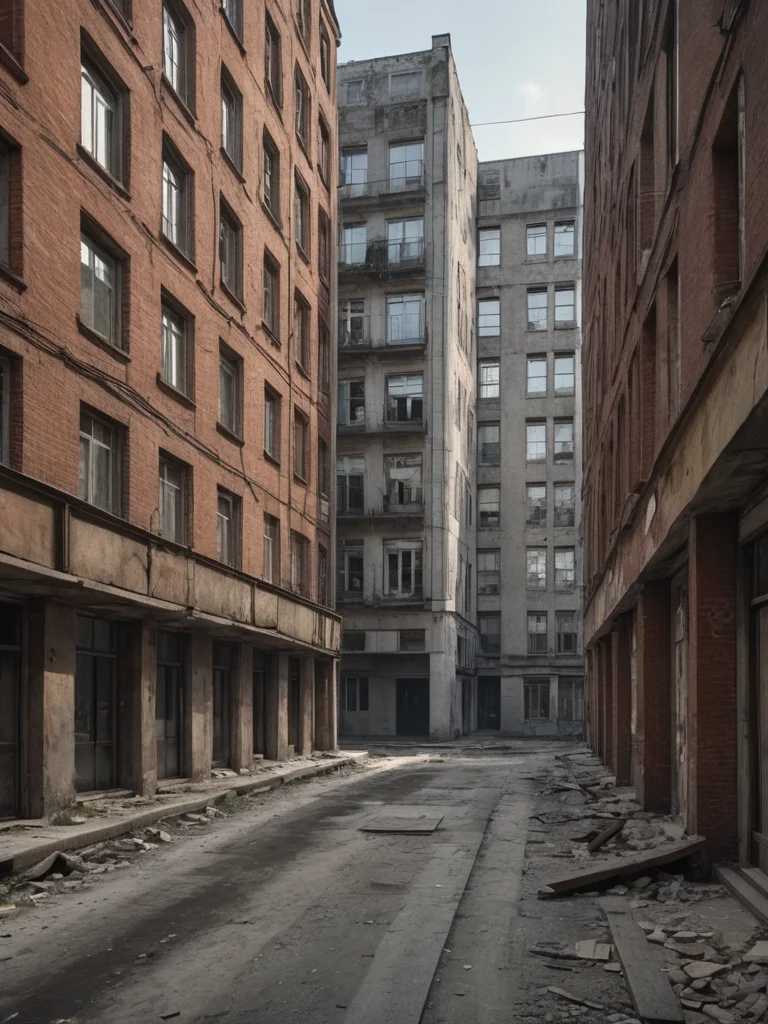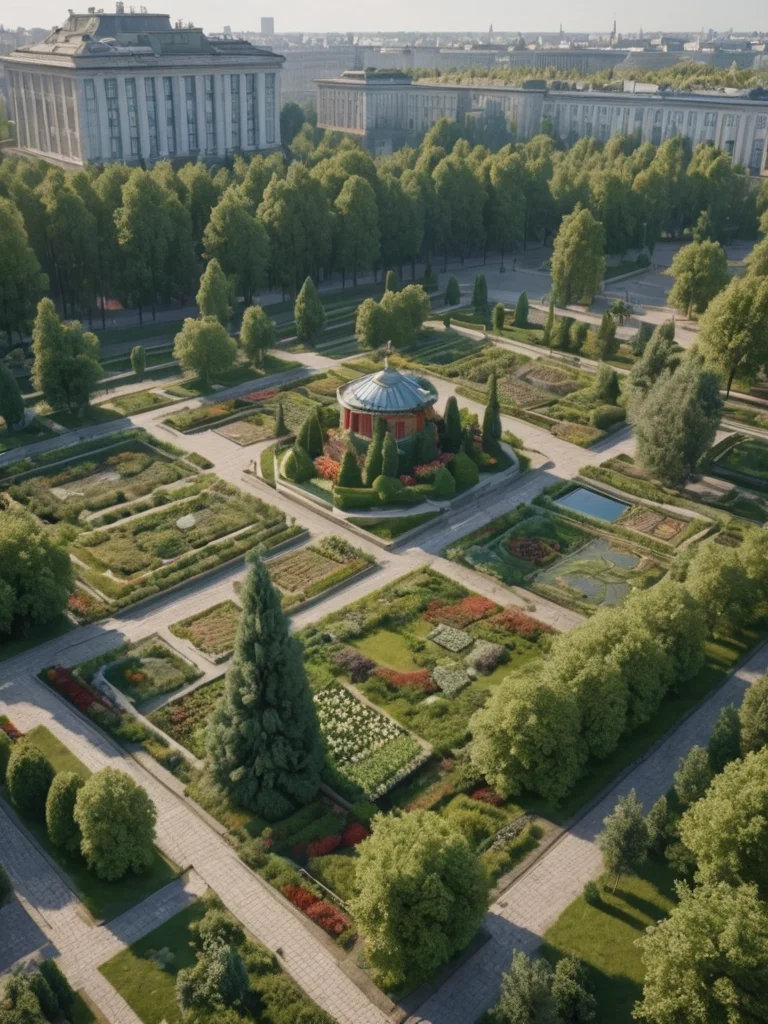Soviet garden cities and science cities are a unique phenomenon in the history of urban planning. They represented an attempt to create an ideal space for life, work, and scientific development, based on the principles of harmony with nature and social justice. These projects, which emerged during the era of industrialization and scientific and technological progress, were intended to be a showcase of the Soviet way of life and an example for the whole world.
In this article, we will take a journey into the past and try to understand how these amazing cities were built and populated. We will examine the ideological foundations that lay at their core, the stages of construction and development, as well as the daily lives of their inhabitants. Finally, we will analyze the legacy of Soviet garden cities and science cities and their impact on modern urban planning.
We will consider how utopian these projects turned out to be and to what extent they managed to realize the dreams of a better future. You will learn who made decisions about the construction of such cities, who lived in them, how they worked, and what achievements were made. Get ready for a fascinating dive into the history of Soviet architecture and social engineering!
Ideology and Planning: Why Were Garden Cities and Science Cities Built in the USSR? (Historical Background, Influence of Western Concepts, Ideological Justification)
The idea of creating garden cities did not arise out of nowhere. It was a response to the problems generated by the Industrial Revolution: overpopulation, environmental pollution, and social inequality. Inspired by the ideas of Western thinkers like Ebenezer Howard, Soviet architects and urban planners attempted to create a new model of settlement that combined the advantages of city and countryside.
Ebenezer Howard, an English sociologist and urban planner, proposed the concept of the garden city at the end of the 19th century as an alternative to overcrowded and polluted industrial centers. His idea was to create self-sufficient communities surrounded by green spaces, where residents could live in harmony with nature and have access to work, education, and cultural entertainment. Howard believed that garden cities should be limited in size and managed by cooperatives, which would ensure social justice and prevent land speculation.
In Russia, Howard’s ideas resonated with the progressive intelligentsia. In the early 20th century, the first attempts were made to create garden cities, but they did not gain widespread popularity due to political instability and economic difficulties. After the revolution of 1917, the concept of the garden city was adopted by the Soviet government as a means of solving the housing problem and creating a new socialist way of life.
Soviet garden cities and science cities became a kind of experiment in realizing utopian ideas about creating an ideal society. They were intended to be centers of science, culture, and production, where people could live in comfortable conditions and fully realize their potential. The ideological component played an important role: garden cities were meant to demonstrate the advantages of the Soviet system and serve as an example for other countries.
One of the key tasks of Soviet urban planning was to overcome the gap between city and countryside. Garden cities were intended to combine the advantages of both types of settlements: the developed infrastructure and cultural opportunities of the city with the environmental cleanliness and proximity to nature of the countryside. It was assumed that this would create a more harmonious and healthy living environment for people.
The planning of garden cities and science cities was carried out based on strict scientific principles. Climatic conditions, geological features of the terrain, transport accessibility, and other factors were taken into account. Architects and engineers strived to create functional and aesthetic spaces that met the needs of the residents. Great attention was paid to landscaping and the improvement of the territory.
Strategic considerations were also taken into account when choosing locations for new cities. Many science cities were created near major industrial centers or military facilities. This allowed for the rapid transfer of scientific developments to production and strengthened the country’s defense capabilities. Zelenograd, created as a center for the electronics industry near Moscow, is an example.
It is worth noting that Soviet garden cities and science cities were not exact copies of Western models. They were adapted to Soviet conditions and ideological guidelines. Unlike Howard’s garden cities, which were to be managed by cooperatives, Soviet cities were under state control. Nevertheless, the idea of creating a harmonious and environmentally clean living environment remained central.
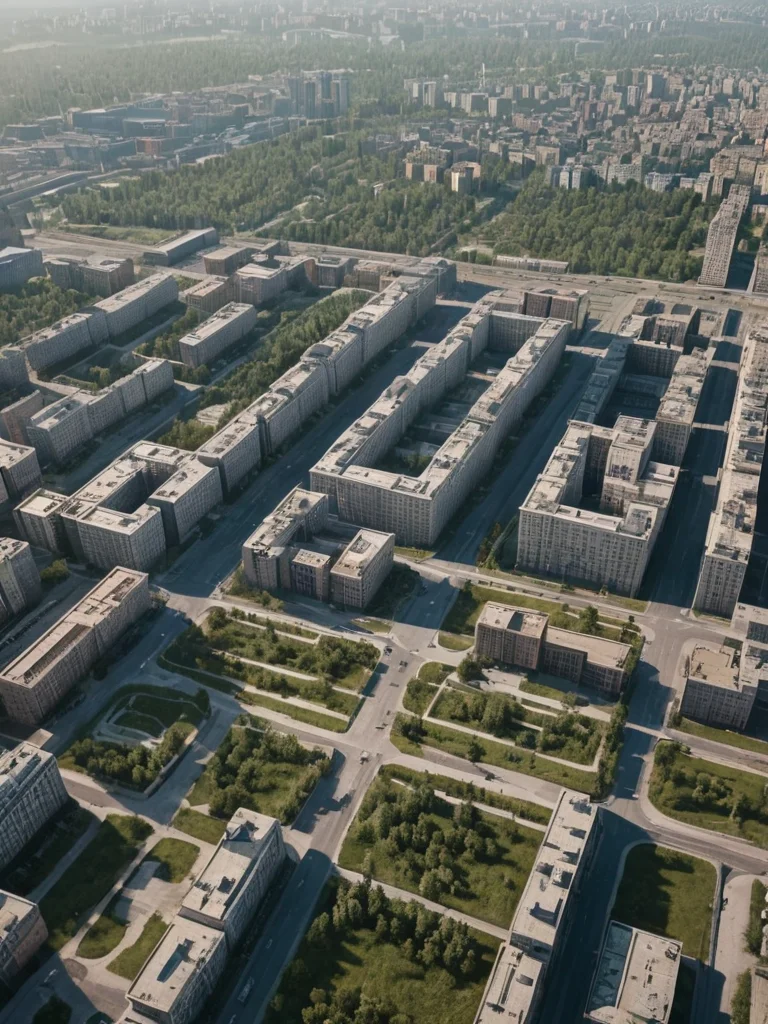
Construction and Settlement Stages: From Project to Reality. Examples of Cities (Akademgorodok, Obninsk, Zelenograd) and Features of Their Development (Architecture, Infrastructure, Social Structure, Who and How Received Housing)
The construction of Soviet garden cities and science cities was a large-scale and complex process that included several stages: design, site preparation, construction of residential buildings and infrastructure, settlement, and urban development. Each of these stages had its own characteristics and required significant resources and effort.
Design began with the development of a general city plan, which defined the main functional zones, transport network, greening system, and other parameters. Leading architects, engineers, economists, and sociologists participated in the design. They sought to create an optimal planning structure that ensured comfort and convenience for residents.
Site preparation included clearing forests, leveling the terrain, laying utilities, and other work. This was a labor-intensive and costly process, especially in the conditions of Siberia and other regions with harsh climates. Construction organizations, military personnel, and prisoners were involved in this work.
The construction of residential buildings and infrastructure was carried out using advanced technologies and materials. Modern residential buildings with comfortable apartments, schools, kindergartens, hospitals, cultural centers, sports complexes, and other facilities were built in the garden cities and science cities. Great attention was paid to the quality of construction and the improvement of the territory.
The settlement of garden cities and science cities was carried out on a competitive basis. Priority was given to scientists, engineers, highly qualified workers, as well as young specialists sent after graduation from universities. Housing was provided free of charge or for a nominal fee. This was an important incentive for attracting talented and promising people to the new cities.
Let’s consider a few examples of Soviet garden cities and science cities. Akademgorodok in Novosibirsk is one of Russia’s most famous scientific centers. It was founded in 1957 and quickly became a magnet for scientists from all over the Soviet Union. Dozens of research institutes were established here, conducting cutting-edge research in various fields of science.
The architecture of Akademgorodok was characterized by functionality and simplicity. Residential buildings were constructed from standard panels, but thanks to good planning and landscaping, the city’s territory looked attractive and cozy. Akademgorodok had a developed social infrastructure: schools, kindergartens, shops, cultural centers, and sports complexes. Special attention was paid to the development of science and education.
Obninsk is the first science city in Russia. It was founded in 1956 in connection with the creation of the world’s first nuclear power plant. Research institutes engaged in nuclear physics, radiation medicine, and other fields of science were built in Obninsk. The city became an important center for training specialists for the nuclear industry.
Zelenograd is a satellite city of Moscow, created as a center for the electronics industry. It was founded in 1958 and quickly became one of the leading centers of microelectronics in the Soviet Union. Research institutes, factories, and other enterprises involved in the development and production of electronic components and equipment were built in Zelenograd.
The architecture of Zelenograd was characterized by modern design and the use of advanced technologies. High-rise residential buildings, shopping centers, cultural facilities, and other structures were built in the city. Zelenograd became one of the most well-maintained and comfortable cities to live in the Soviet Union.
The social structure of Soviet garden cities and science cities was characterized by a high proportion of intellectuals and skilled workers. Scientists, engineers, doctors, teachers, cultural workers, and other representatives of the educated and progressive segment of the population lived here. The cities had a favorable atmosphere for the development of science, culture, and education.
Obtaining housing in Soviet garden cities and science cities was prestigious and advantageous. Apartments were provided free of charge or for a nominal fee, allowing people of different income levels to live in comfortable conditions. In addition, city residents had access to developed social infrastructure and a wide range of services.
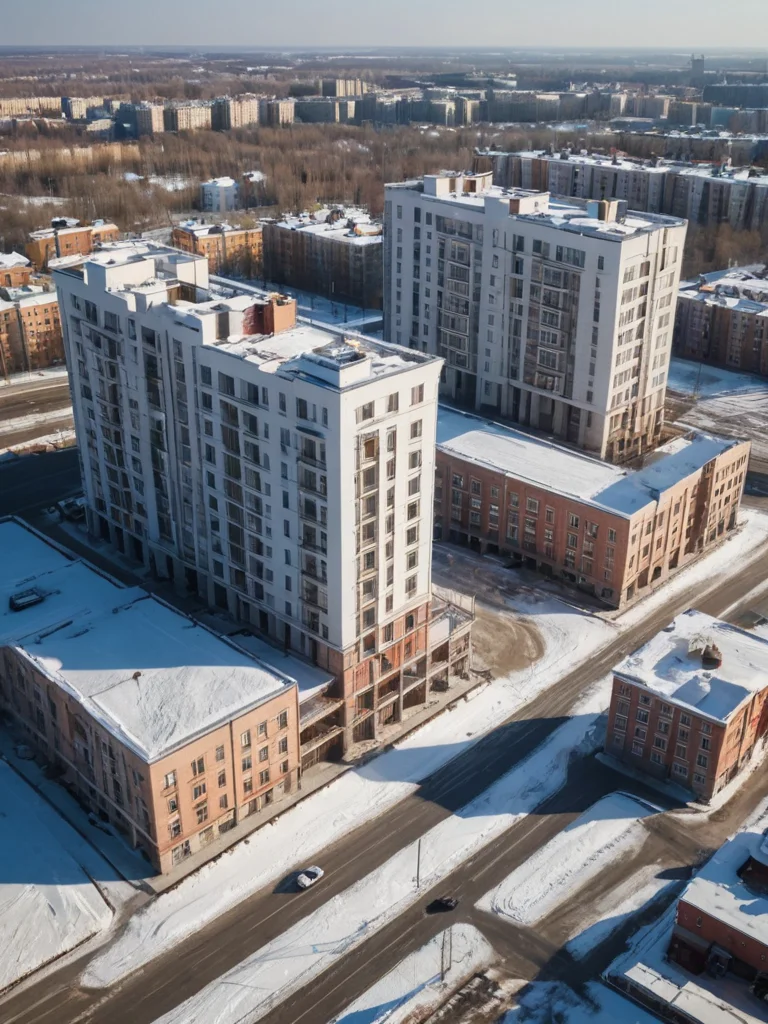
Life in the City of the Future: Daily Life and Achievements. What Was Life Like in Soviet Garden Cities and Science Cities? (Education, Science, Culture, Leisure, Standard of Living)
Life in Soviet garden cities and science cities differed significantly from life in ordinary cities. An atmosphere of scientific inquiry, creative uplift, and social activity prevailed here. People were involved in scientific work, cultural events, and public life. The level of education, culture, and living standards in these cities was significantly higher than the national average.
Education played a key role in the life of Soviet garden cities and science cities. The best schools, kindergartens, and universities were established here, staffed by highly qualified teachers and scientists. Education was free and accessible to all. Children from garden cities and science cities had the opportunity to receive a quality education and enroll in the best universities in the country.
Science was the foundation of life in the science cities. Research institutes were established here, conducting cutting-edge research in various fields of science. Scientists from the science cities made significant contributions to the development of Soviet science and technology. Their developments were used in industry, medicine, defense, and other areas.
Culture held an important place in the life of Soviet garden cities and science cities. Theaters, museums, libraries, and cultural centers were built here, hosting concerts, exhibitions, performances, and other events. City residents had the opportunity to engage with culture and art and develop their creative abilities.
Leisure in Soviet garden cities and science cities was diverse and interesting. Sports complexes, parks, squares, and beaches were created here, where people could engage in sports, relax in nature, and spend time with family and friends. Festivals, competitions, sports events, and other activities were held in the cities.
The standard of living in Soviet garden cities and science cities was significantly higher than the national average. City residents had access to quality housing, food, consumer goods, medical care, education, and other services. The cities provided favorable conditions for work, study, recreation, and personal development.
Soviet garden cities and science cities became an example of a successful social experiment. They showed that it is possible to create cities where people can live in harmony with nature, engage in science, culture, and education, develop their creative abilities, and improve their standard of living. These cities became a showcase of the Soviet way of life and an example for other countries.
Of course, life in Soviet garden cities and science cities was not ideal. There were its own problems and shortcomings: shortages of goods, restrictions on freedom of speech, and state control. However, on the whole, life in these cities was more comfortable and interesting than in ordinary cities of the Soviet Union.
Many residents of Soviet garden cities and science cities fondly remember their lives in these cities. They are proud of their achievements in science, culture, and education, as well as of having lived in cities that were a symbol of Soviet progress and hope for a better future.
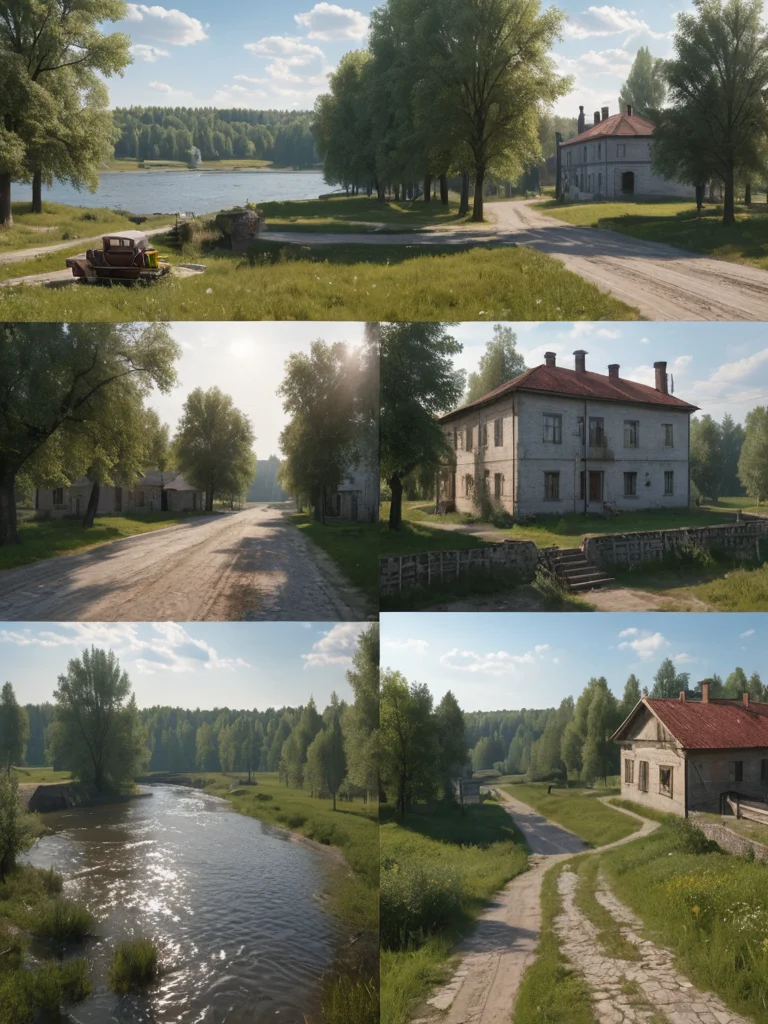
Legacy and Modernity: What Remains of Soviet Garden Cities and Science Cities Today? (Problems and Prospects, Impact on Modern Urban Planning, Tourist Potential)
After the collapse of the Soviet Union, Soviet garden cities and science cities faced new challenges and problems. Economic difficulties, social changes, and population outflow all negatively affected the development of these cities. However, many of them managed to adapt to the new conditions and preserve their scientific and cultural potential.
Today, Soviet garden cities and science cities are unique cities with a rich history, developed infrastructure, and a high level of education among their population. They continue to play an important role in Russian science, education, and culture. Many of them have become tourist centers, attracting visitors from all over the world.
One of the main problems of Soviet garden cities and science cities is outdated infrastructure. Many residential buildings, schools, hospitals, and other facilities require repair and modernization. Insufficient funding and a lack of investment hinder the solution of this problem.
Another problem is the outflow of population, especially young people. Many young people leave for larger cities in search of work and better opportunities for self-realization. This leads to an aging population and a decline in the scientific potential of the cities.
However, despite these problems, Soviet garden cities and science cities have great potential for further development. They possess a unique scientific and cultural heritage, highly qualified personnel, developed infrastructure, and favorable living conditions. To realize this potential, it is necessary to attract investment, develop innovations, create new jobs, and improve the quality of life for the population.
Soviet garden cities and science cities have had a significant impact on modern urban planning. Their experience in creating a comfortable and environmentally clean living environment, organizing scientific and cultural activities, and developing education and healthcare has been taken into account in the design of new cities and towns. Many principles developed in Soviet times are still used today.
For example, the idea of creating satellite cities surrounded by green spaces has become widespread throughout the world. Many modern cities are built on the principle of polycentricity, with multiple centers that provide convenience for residents and reduce traffic load. When designing new cities, great attention is paid to landscaping, site improvement, and the creation of pedestrian zones and bicycle paths.
The tourist potential of Soviet garden cities and science cities is enormous. They attract tourists with their unique architecture, historical monuments, science museums, cultural centers, and beautiful nature. Festivals, conferences, exhibitions, and other events are held in these cities, attracting tourists from all over the world.
For example, Akademgorodok in Novosibirsk attracts tourists with its research institutes, museums, parks, and beautiful nature. In Obninsk, tourists can visit the world’s first nuclear power plant, the city’s history museum, and other attractions. In Zelenograd, tourists can see modern architecture and visit science museums and cultural centers.
Soviet garden cities and science cities are a unique phenomenon in the history of urban planning. They are a legacy of the Soviet era and an example of how to create cities where people can live in harmony with nature, engage in science, culture, and education, develop their creative abilities, and improve their standard of living. These cities continue to play an important role in Russian science, education, and culture and have great potential for further development.
